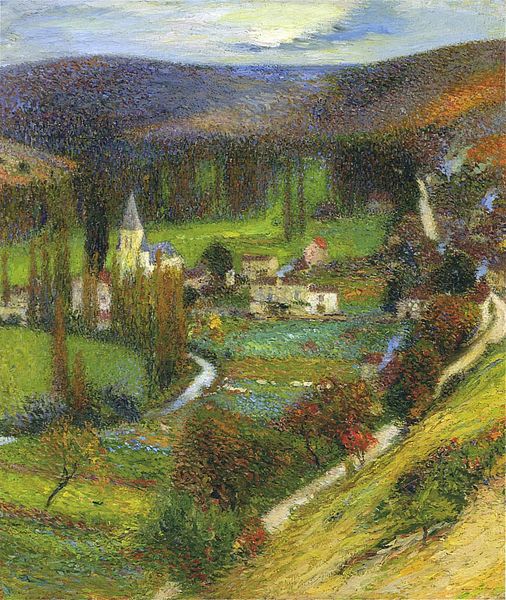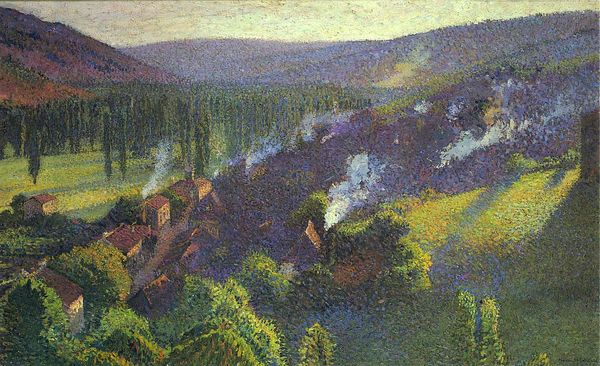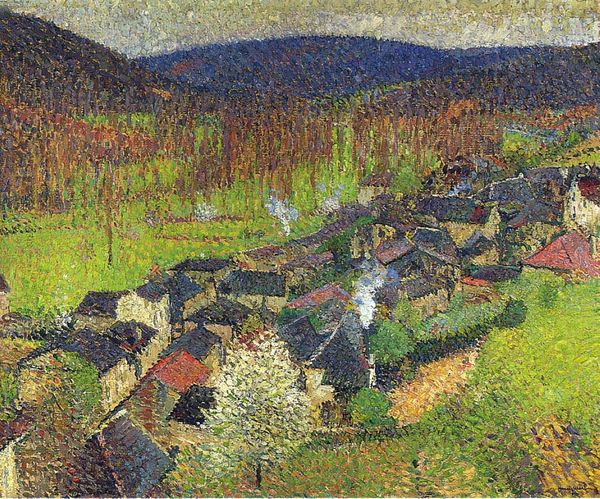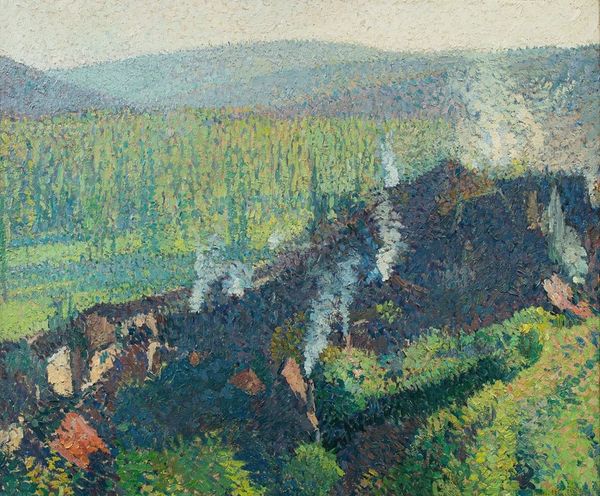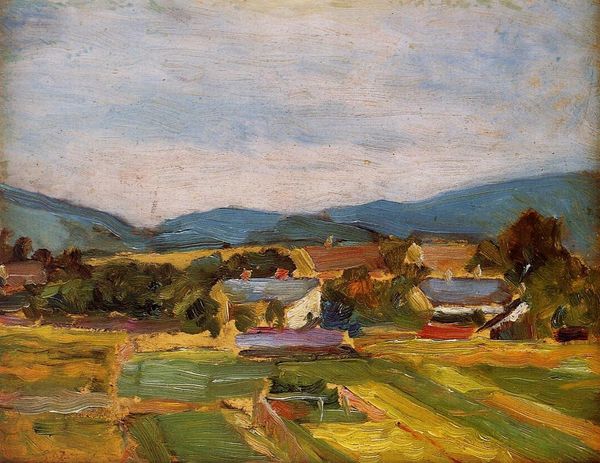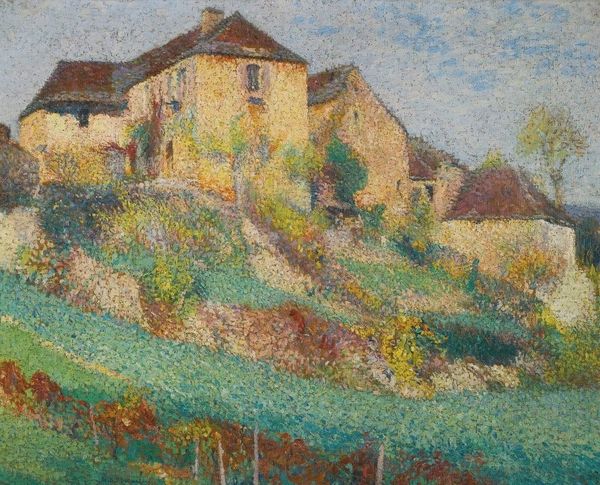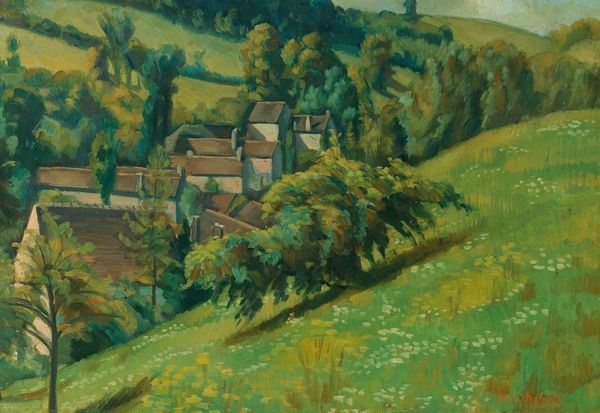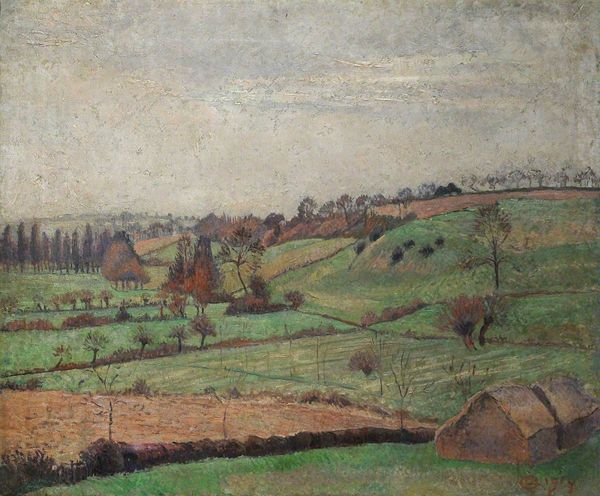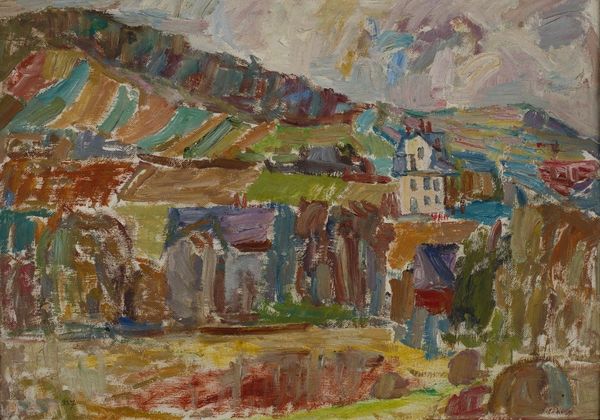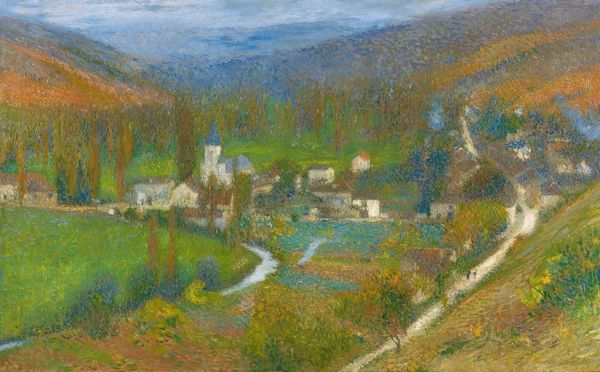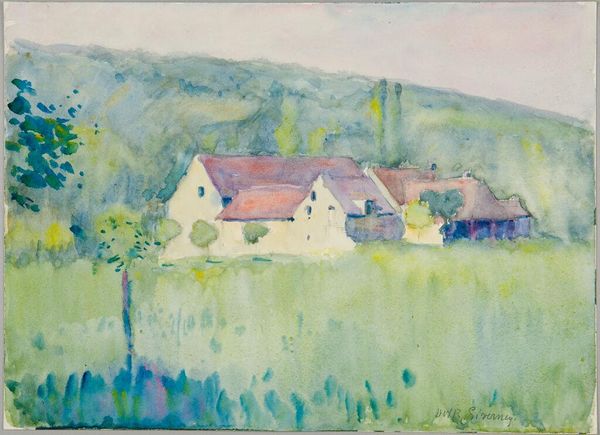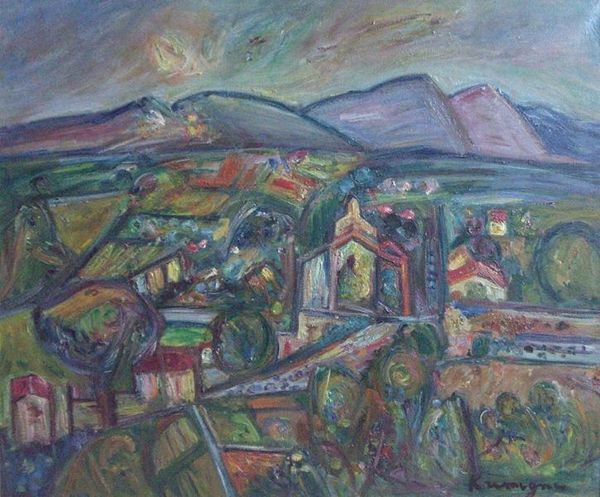
Copyright: Public domain US
Curator: So, here we have Samuel Mutzner’s "Landscape from Giverny," painted in 1908. Editor: Yes! The oil paint is applied with such visible, short strokes. There is an interplay between this textured application and the smooth atmospheric perspective used for the background elements, like that softly rendered hillside. I’m fascinated by how the artist chose to balance these techniques, seemingly in opposition of one another, to construct this compelling composition. What draws your eye? Curator: It is exactly as you observed; it is the treatment of pictorial space and application of form to flatten or distance it, juxtaposed by moments of hyper-real textural detail and chromatic interplay. Observe how Mutzner constructs the image in layers using visible strokes— almost discrete touches of color—and ask yourself how the formalist approach of separating color contributes to both space and perceived volume. What effect do you think that choice has on the viewing experience? Editor: Well, because he used this separation between each "touch" of paint, to create this atmospheric haze it creates depth, sure, but also pulls the painting towards abstraction. Is it a landscape or is it the feeling of a landscape? Curator: Precisely. Notice also the geometry, and how even seemingly freehand marks construct triangular volumes of receding space, countered by flattened applications that deny three dimensions. The interplay is a dynamic push and pull. Editor: So it becomes about not just the representation, but how it is represented. The layers build more than a picture; they make an argument. I never considered that before. Thank you for your help! Curator: A fruitful analysis; perspective can shift with simple formal observations, altering our approach to visual syntax.
Comments
No comments
Be the first to comment and join the conversation on the ultimate creative platform.
